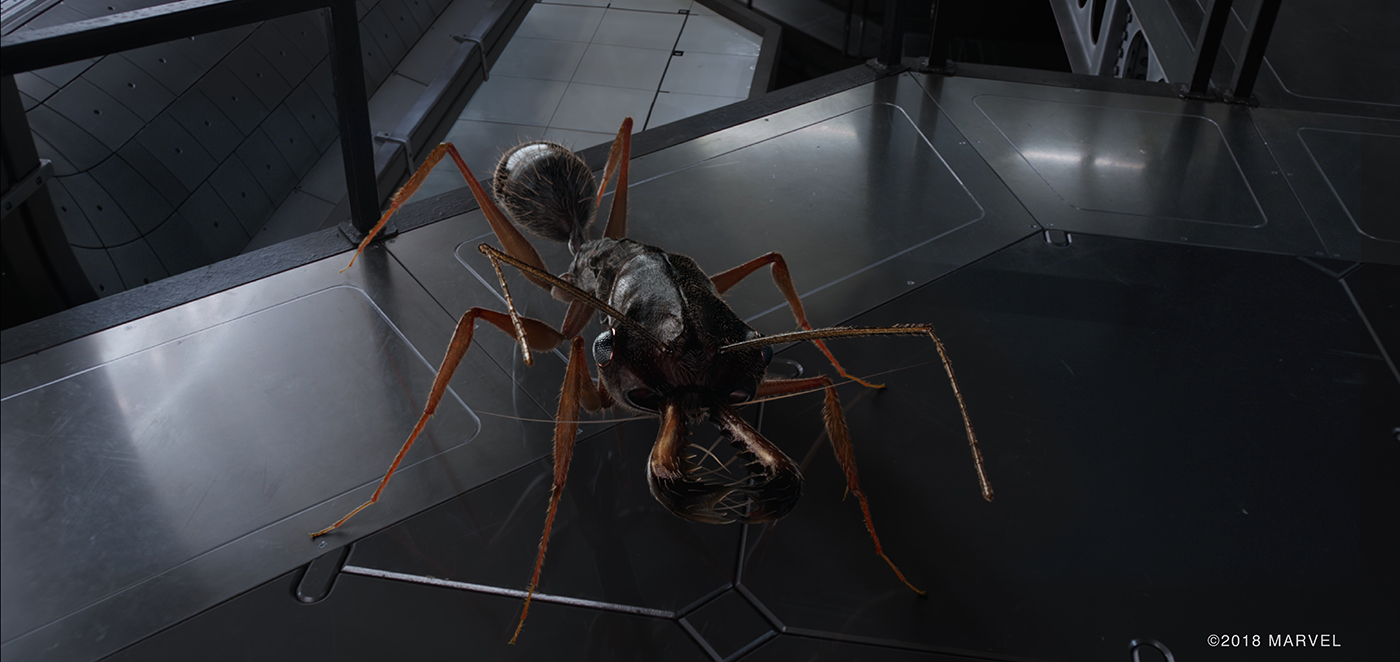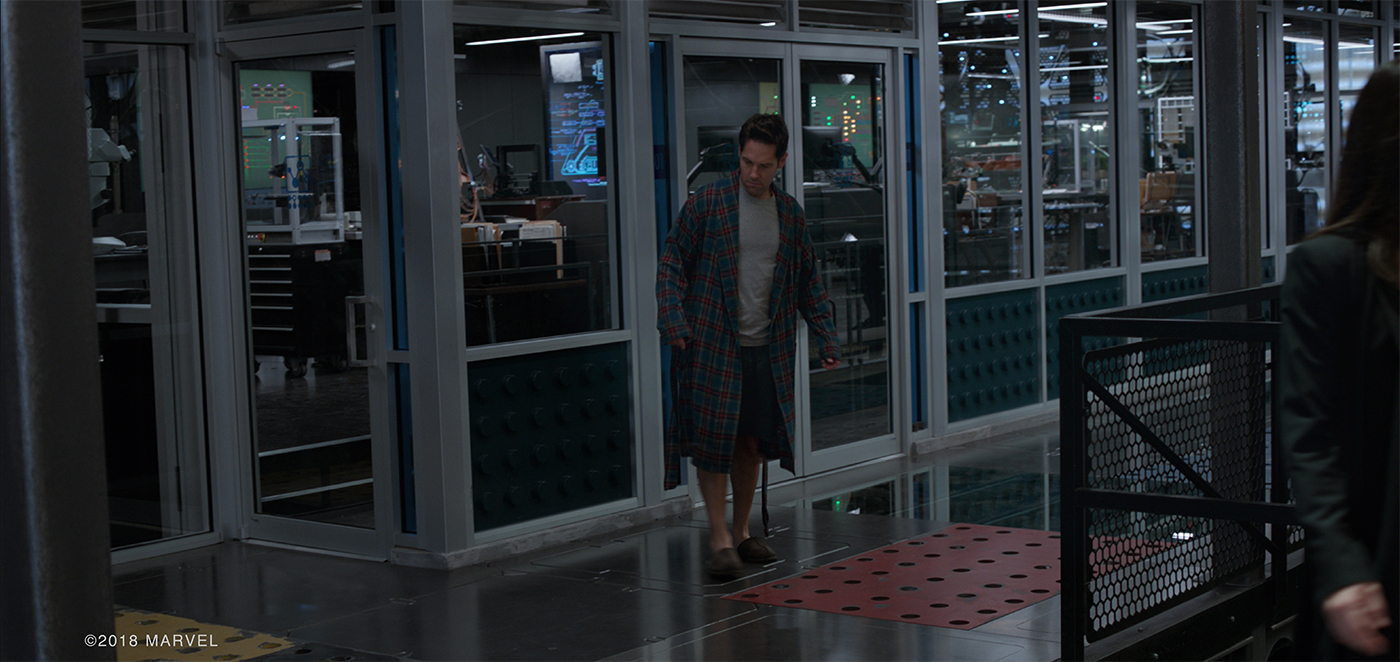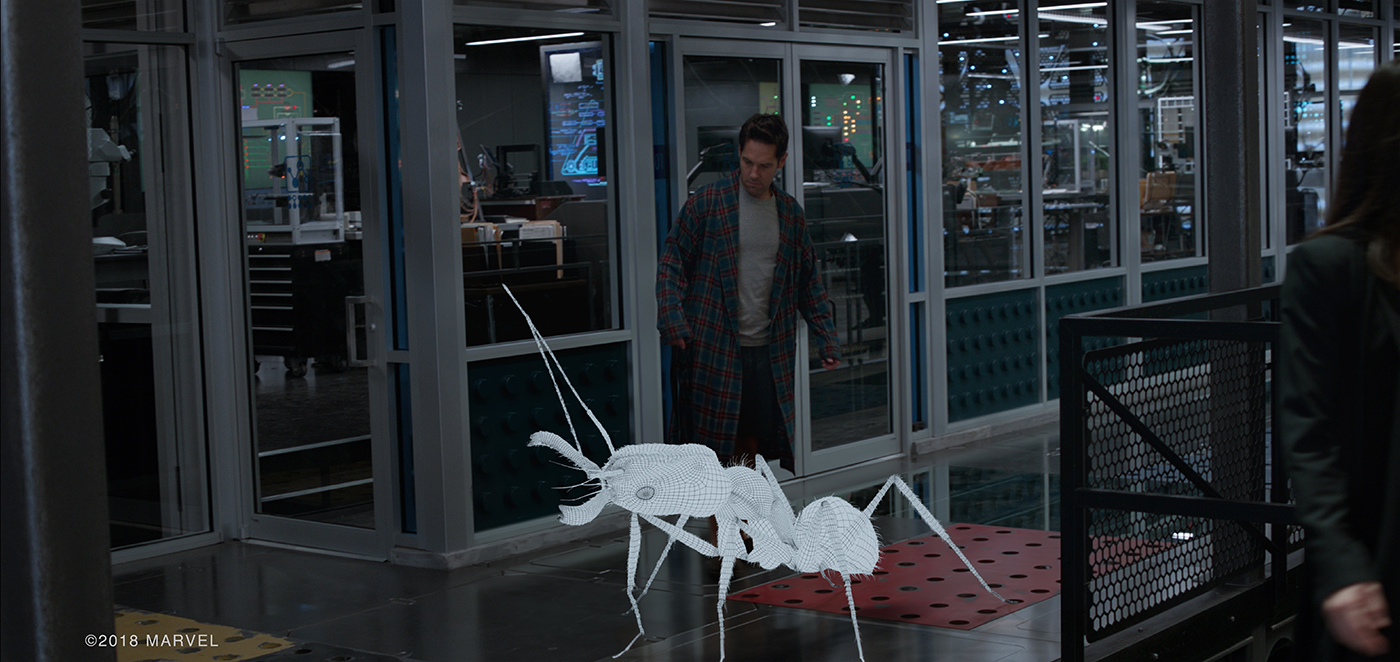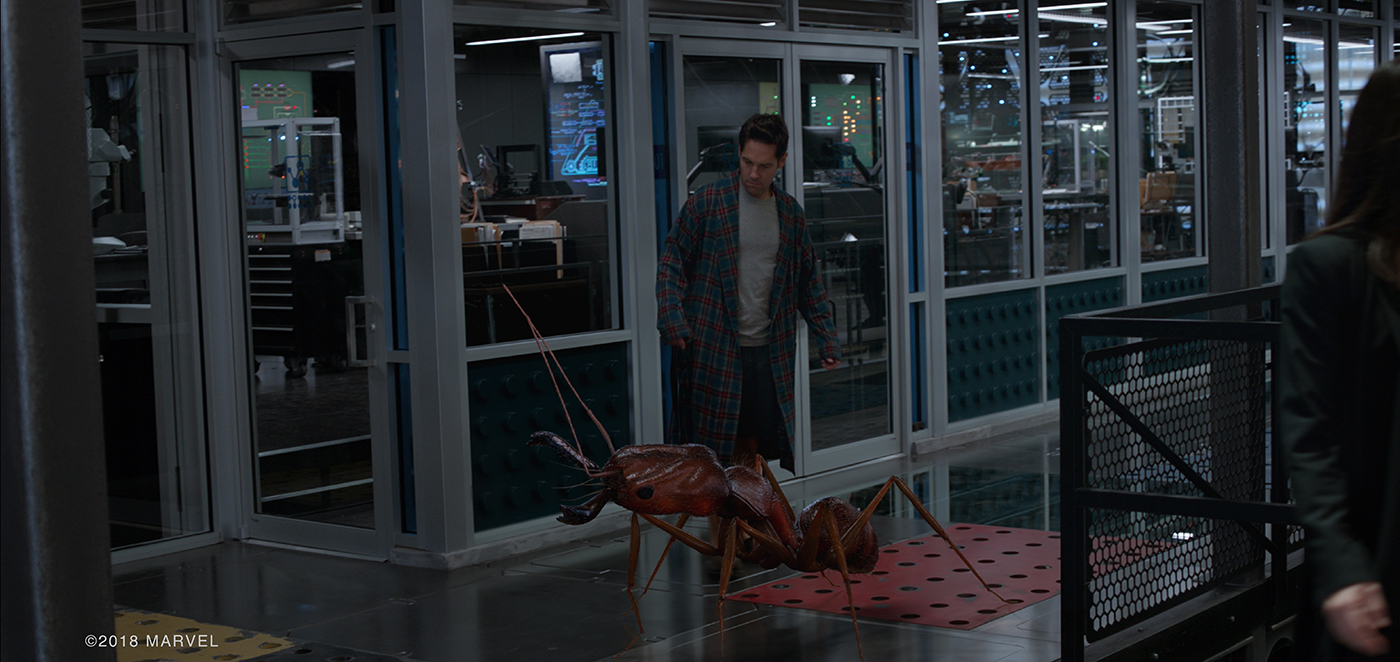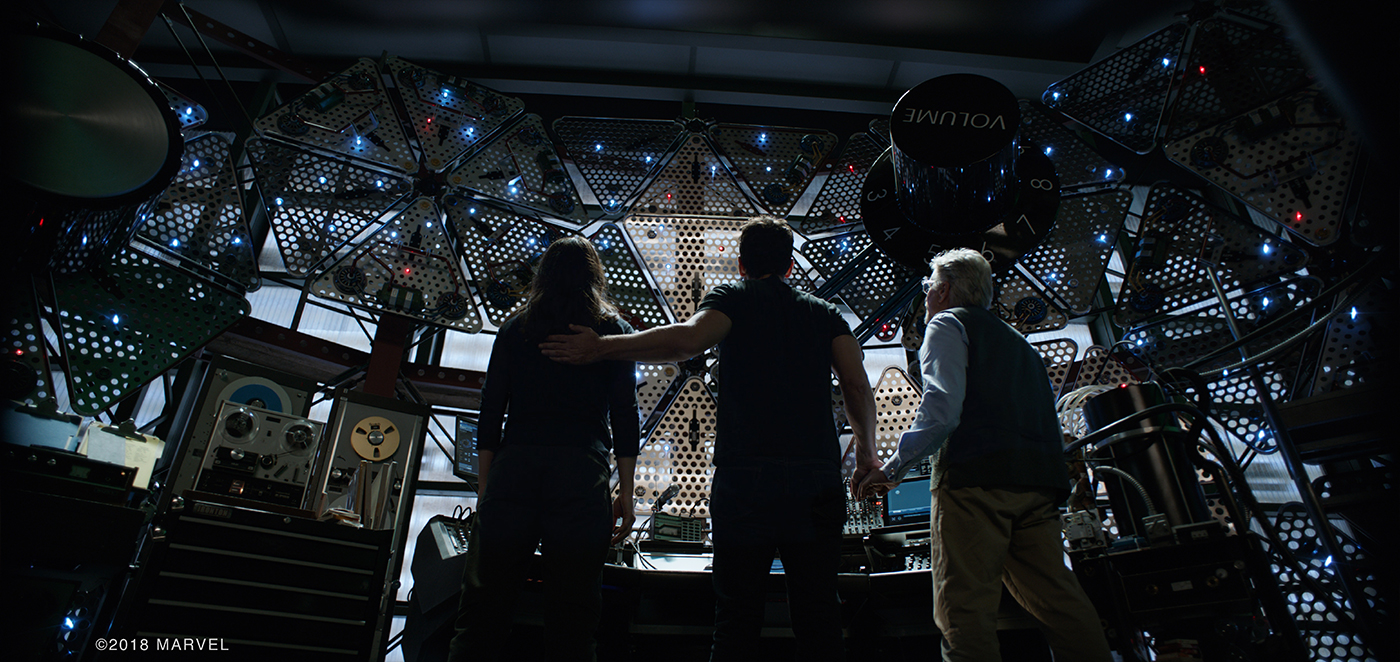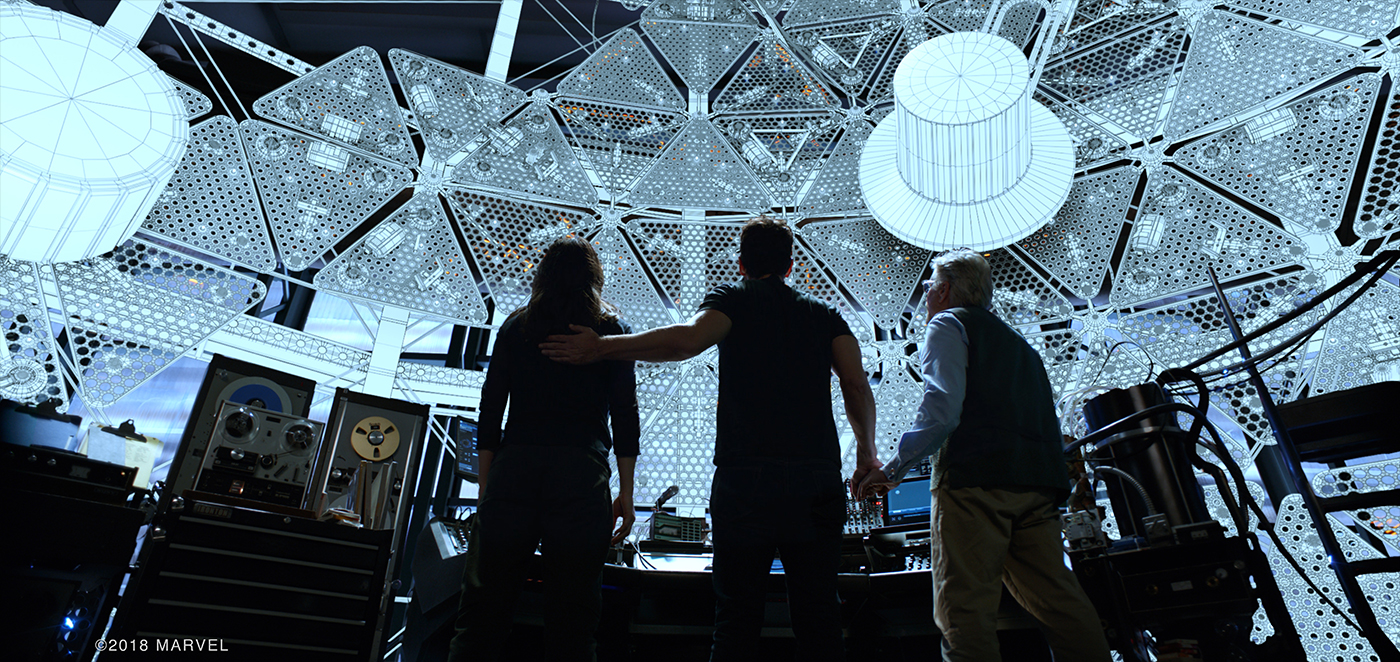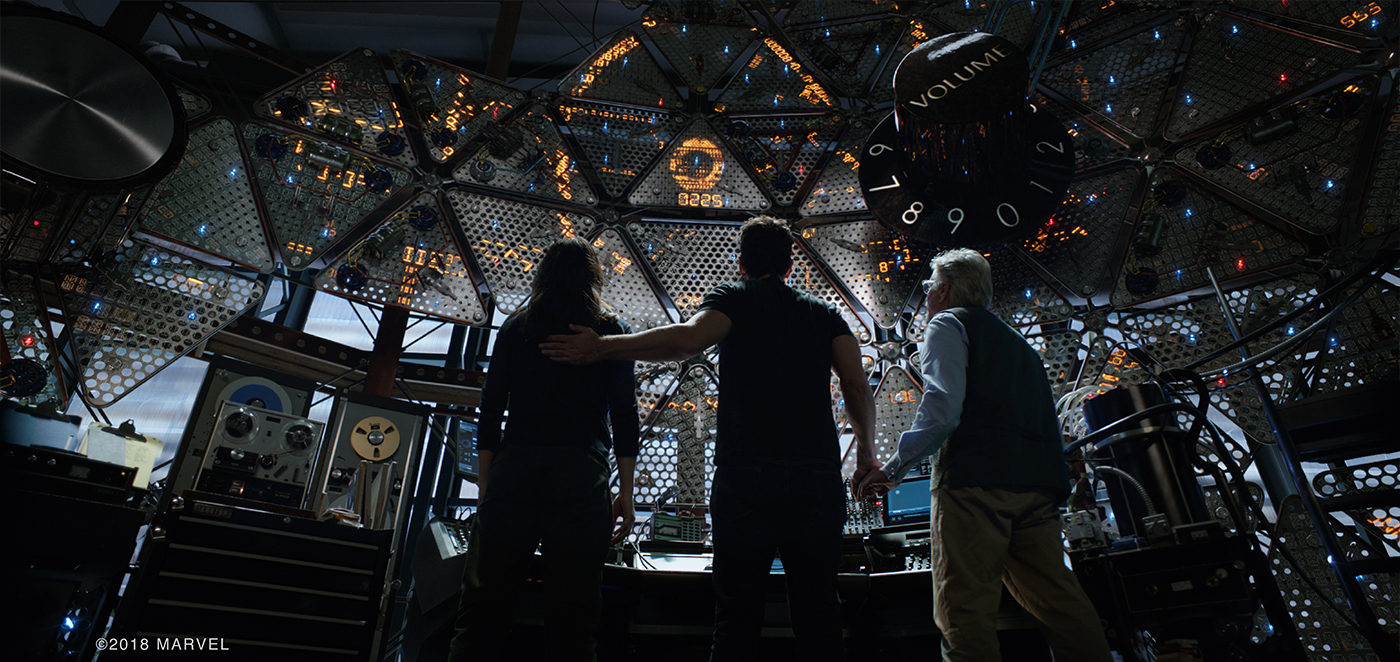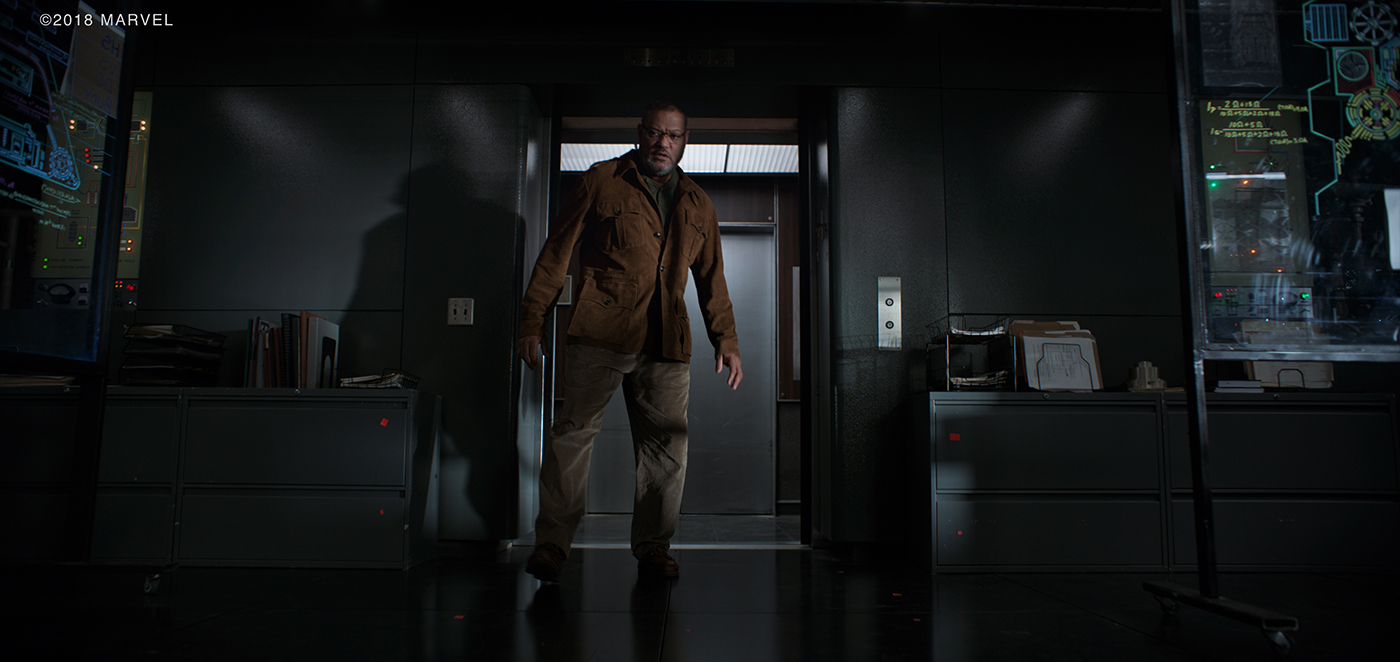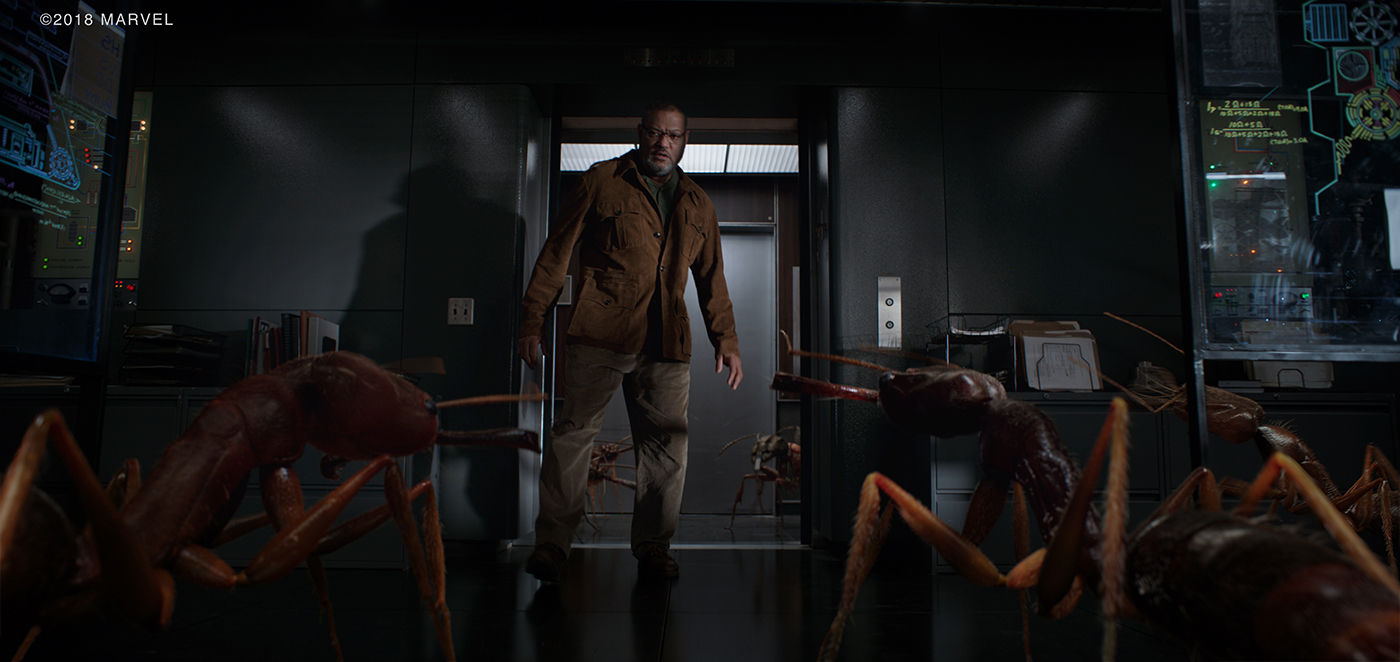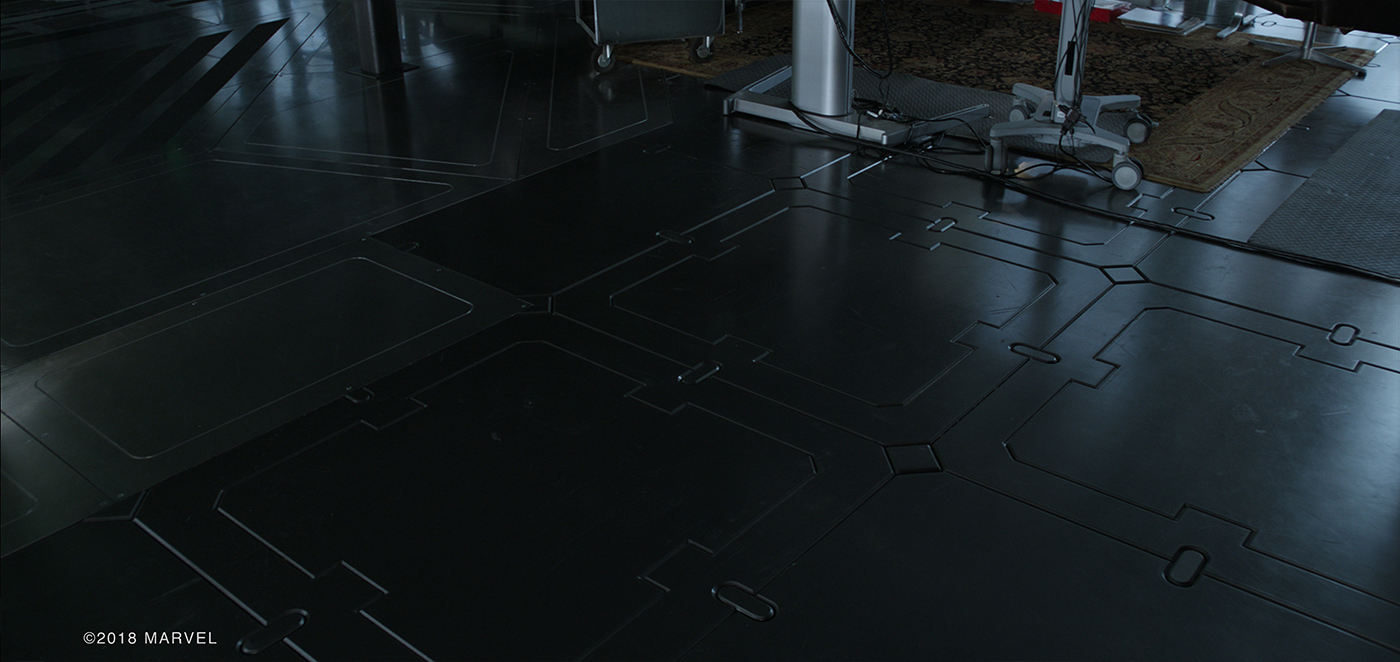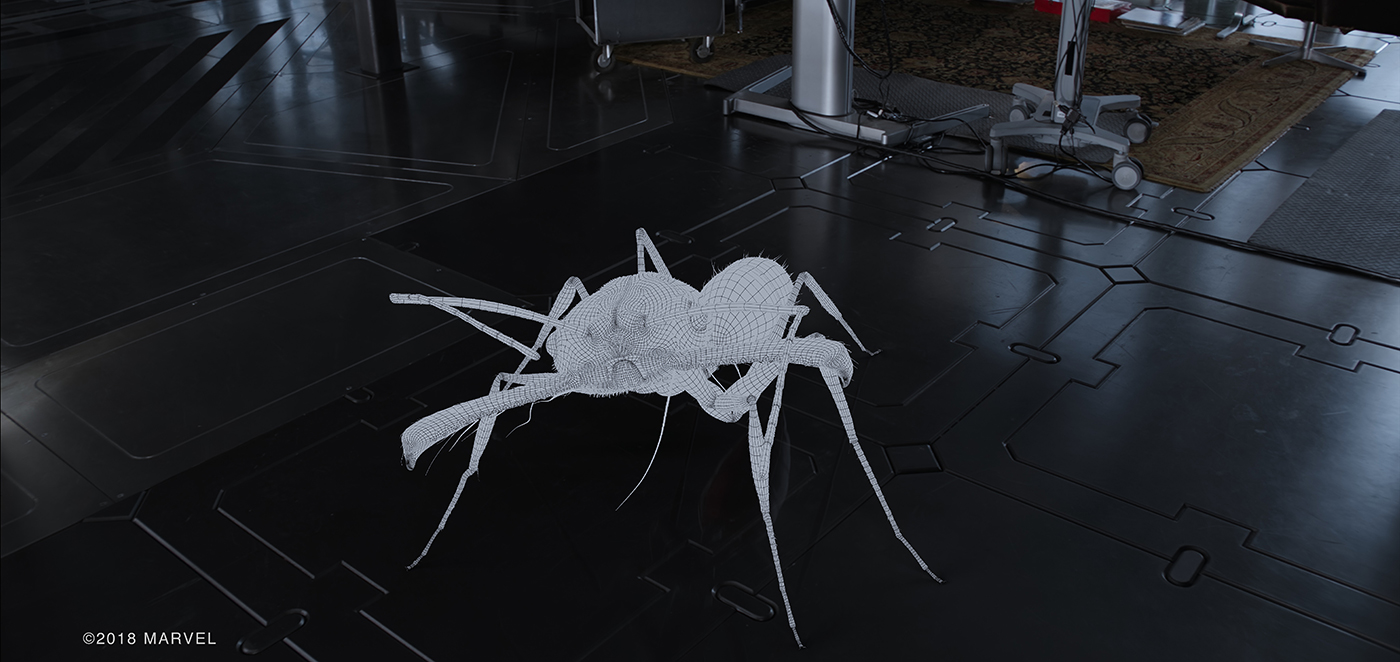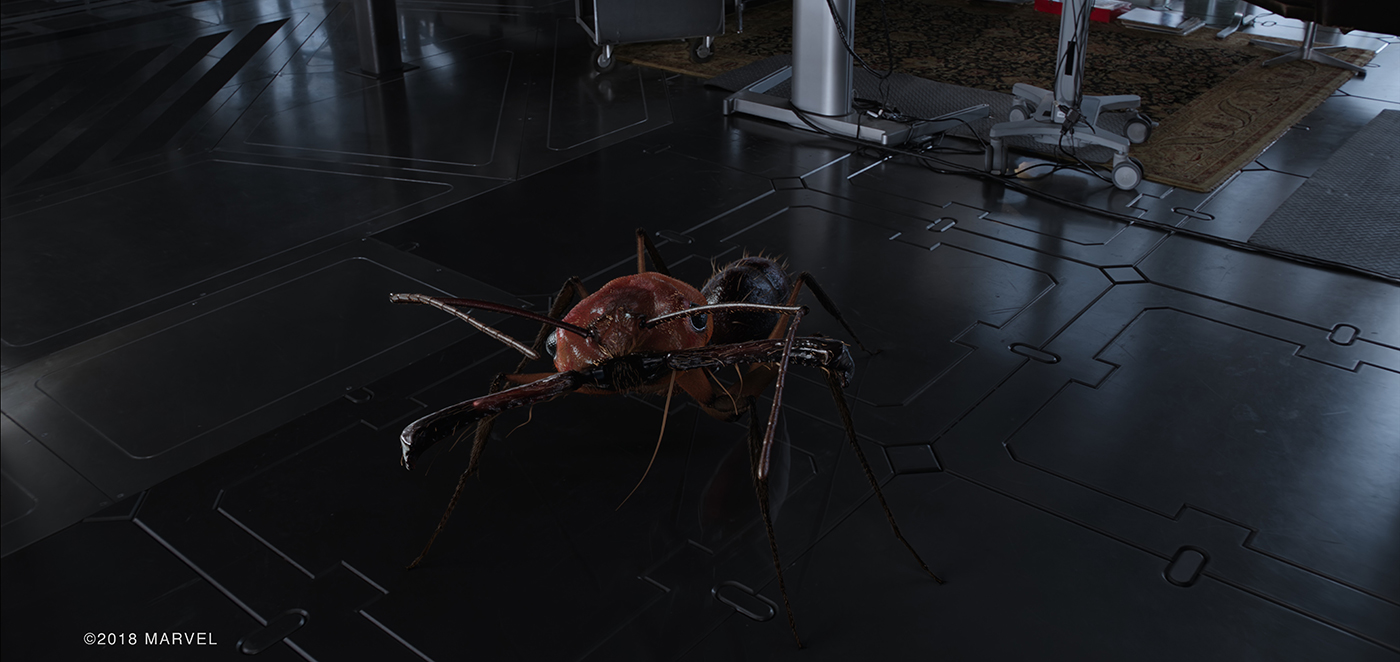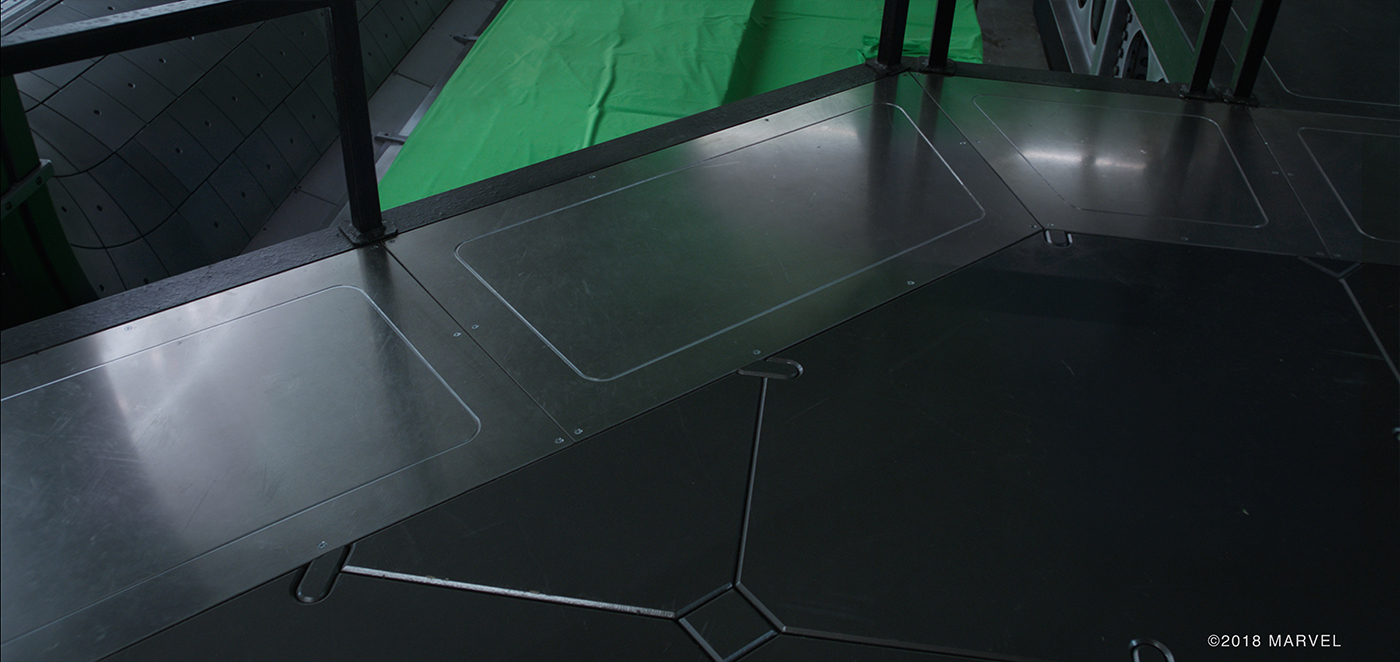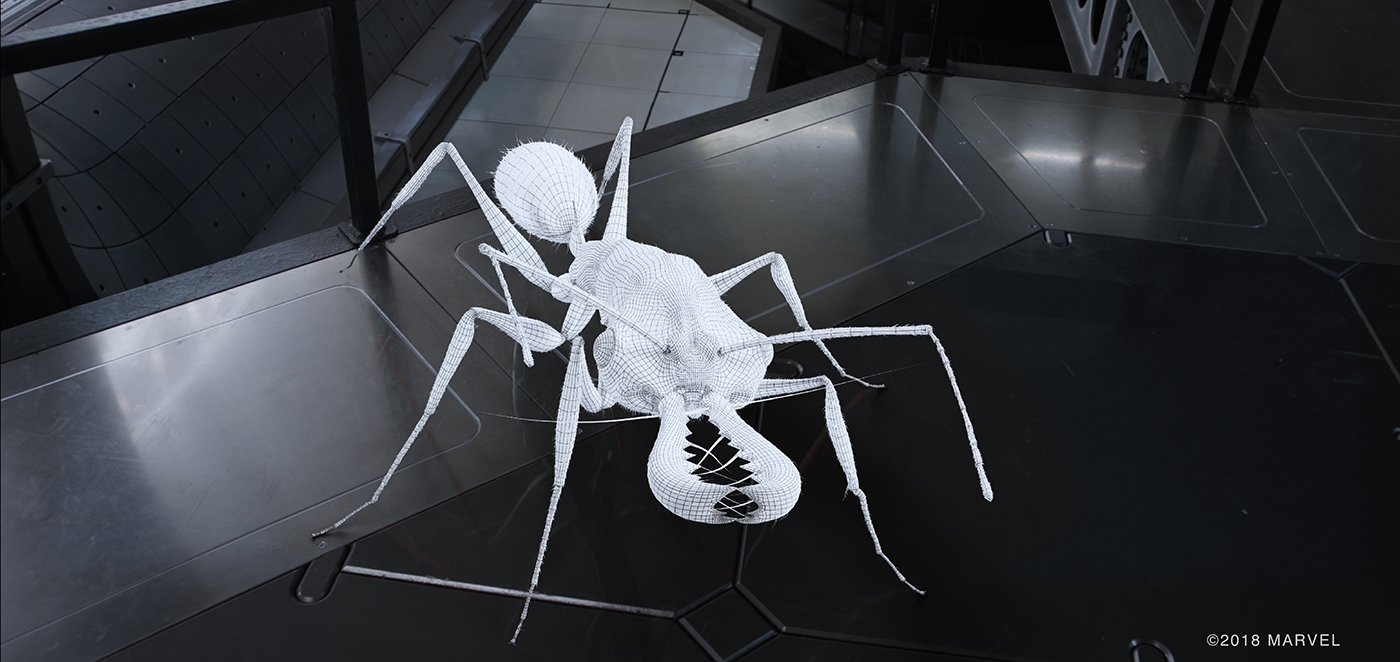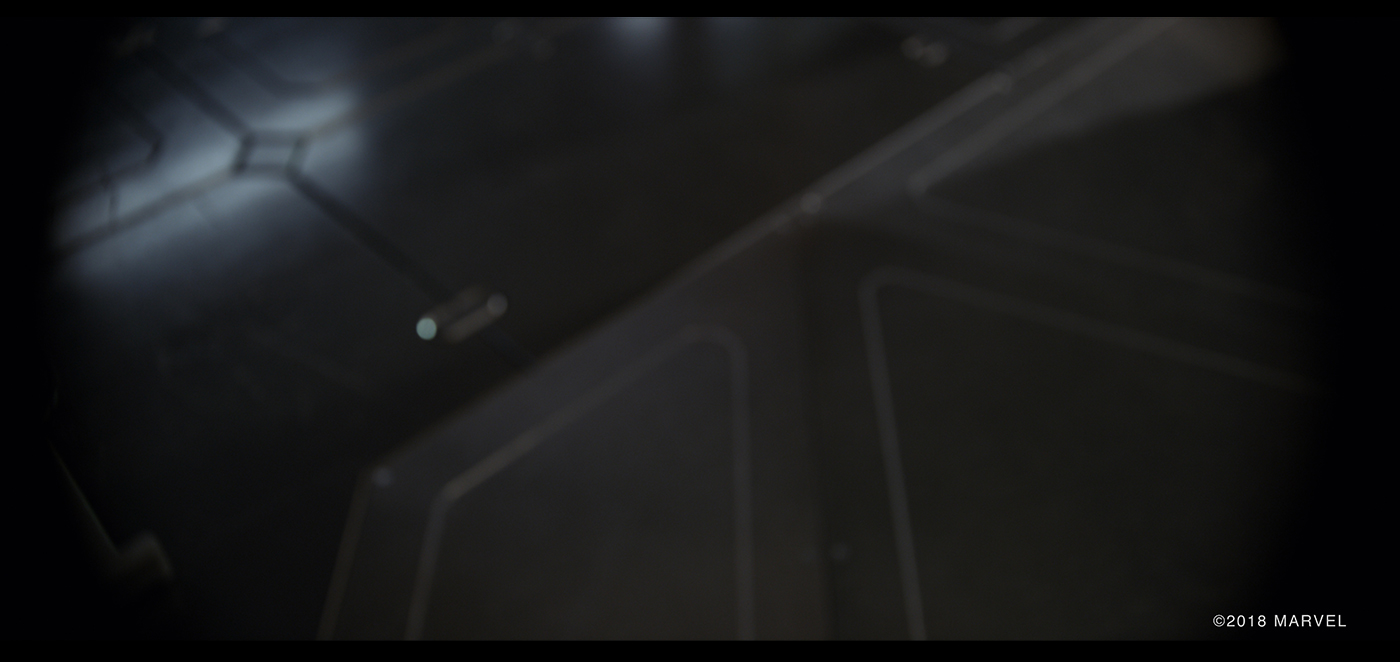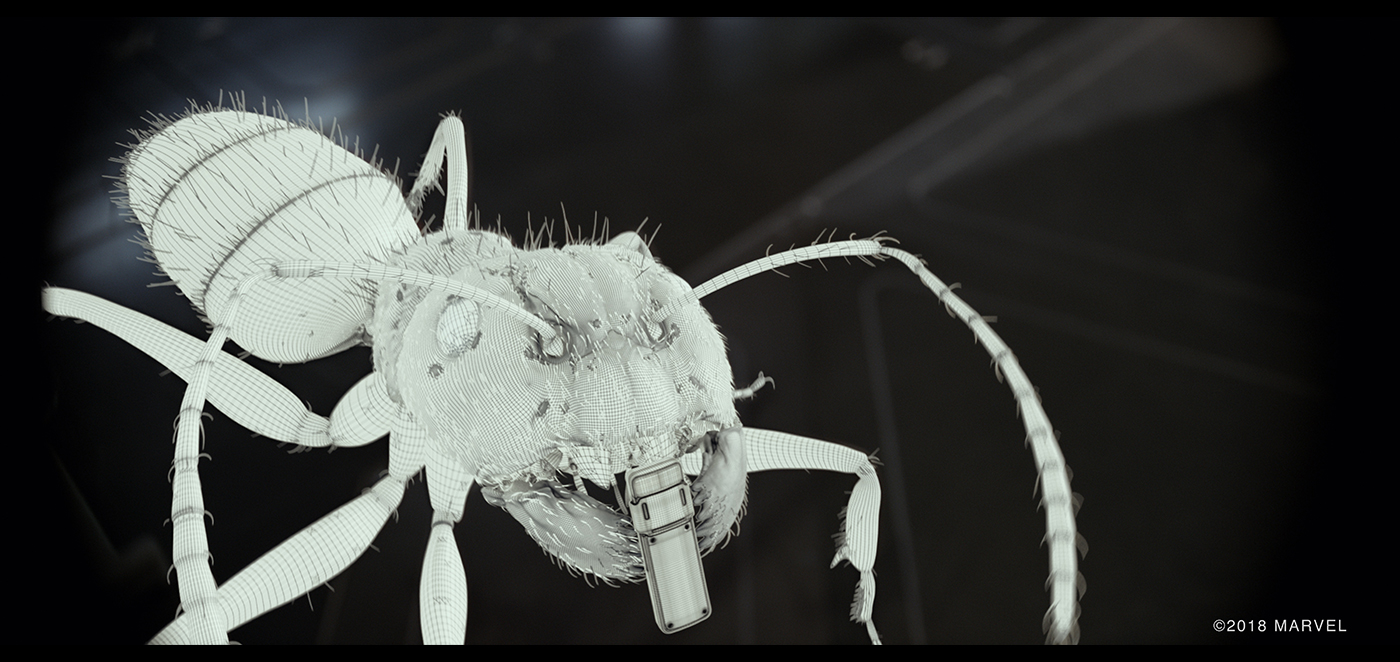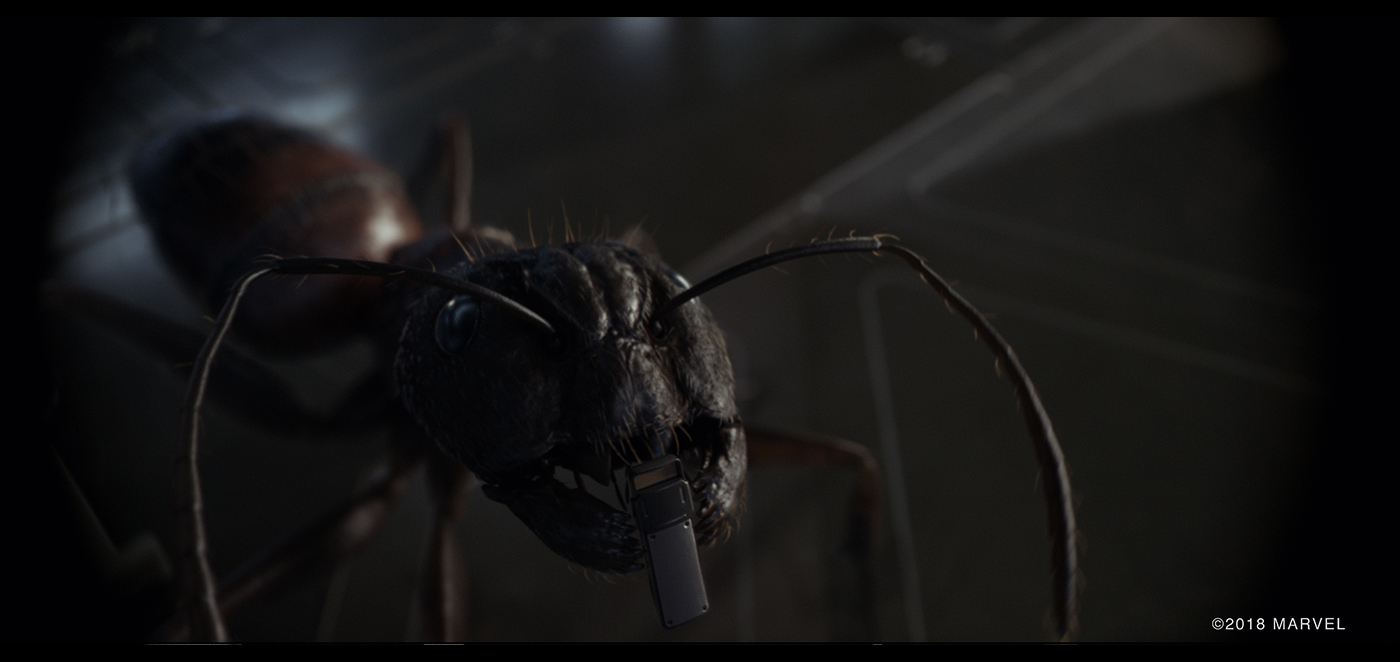At the beginning of the year, Stephane Paris explained the work of Cinesite on THE COMMUTER. He then returns to the Marvel Cinematic Universe for ANT-MAN AND THE WASP.
How did you get involved on this show?
Cinesite has worked on many Marvel films, IRON MAN 3, ANT-MAN, CAPTAIN AMERICA: CIVIL WAR and more recently AVENGERS INFINITY WAR, we had also worked with Stephane Ceretti before so it was a good match all round.
What was your feeling to be back in the Marvel Cinematic Universe?
It felt great! This is my second time working in the MCU after GUARDIANS OF THE GALAXY, with Stephane Ceretti. It was awesome to see how passionate the crew were about the Marvel Universe and seeing that translate into the work on the show. It’s always fun to do creature work and Marvel are great to work with because they are so aware of the important role VFX plays in their films.
How was the collaboration with director Peyton Reed and VFX Supervisor Stephane Ceretti?
The majority of our collaboration was with Stephane Ceretti. He was great to work with and he had a very clear vison of how he wanted the shots to look, his team were fantastically well organised and very collaborative. The fact we had worked alongside Stephane on a previous show meant we had a relaxed and fun experience throughout the project. Once we had locked the design of the trap-jaw ants, we were able to have some fun exploring options for the more dynamic ant shots. During the R&D stage, we had Peyton joining our dailies calls, which was great, it’s always invaluable to have the director working closely with us.
What was his expectations and approaches about the visual effects?
The main goal for our sequences was to achieve a strong sense of reality, we put great emphasis on matching our creature and environment work to the plates and production references. Ceretti provided us with amazing photos for the ants and his brief was very precise especially with regards to the ants chitine thickness at the larger scale.
How did you organize the work with your VFX Producer?
Between my producer Chad Nixon and my 2D supervisor Nicolas Borens we organised the sequences based on a selection of master shots. We then used them to finalise our ants and environment assets lookdev in sequence situations. The master shots were also used to render similar shots against using the exact same lighting set up and to then render and comp them very efficiently.
Our other aim was to present animation blocking on complete sequences as soon as possible so we could receive fast approval on animation continuity and have maximum time to refine the animation per shot. Even when the edit was swapping shots we could re-use the animations based on the timeline which made the process more efficient. Other than that, it was a pretty classic workflow from assets build through to comp sequence setups.
How did you split the work amongst the Cinesite offices?
We didn’t on this occasion the show was entirely handled by myself and the crew in Montreal.
What are the sequences made by Cinesite?
We delivered six key VFX sequences in the film. One of the main aspects of our work was bringing the super-sized trap-jaw ants to life in Dr. Hank Pym’s laboratory where they are assisting the scientist in his secret refuge in a disused building in Oakland. We also extended the lab environment in many directions across a range of shots and in other instances replaced parts of the practical set to give the team full control over the lighting and animation when it came to the ants interacting with the lab environment. Outside of Hank’s lab Cinesite also created a suburban San Francisco environment where Scott has been placed under house arrest by the FBI. Scott and his daughter ride a sled down the outdoor stairs of a terraced house. We extended the street and neighbourhood environment using lidar scans and 360 degrees reference photos from the San Francisco block to deliver a 2.5D set extension.
Can you explain in detail about the creation of the Hank’s lab environment?
Hank Pym’s lab is made from improvised devices made of large (or small) items powering the equipment and holding it all together. Using CG, we extended the practical set in many shots featuring the giant trap-jaw and carpenter ants on the upper and lower floors. The team added various props such as a giant AA battery pack and RC shock absorbers to match the ones that were built practically on set. In some instances, we needed to remove practical parts of the onset lab such as the engine pistons, replacing them with animated CG versions to allow them to control the prop interaction with the CG ants who are using a CG suspended pulley system to replace the tip of the engine piston. We also rebuilt in 2.5D the ceiling and its extension to recreate the background and complete the lab environment.
A key feature of the Pym’s lab is the Antenna Array, which Hank and Hope are using to locate Janet van Dyne in the Quantum realms. The team updated the Antenna replacing the onset screen panels completely with CG. The antenna’s model and textures were enhanced by lookdev, making the metal panels appear covered with a liquid crystal-based layer to enable the illumination and the animation of text on the moving screens in a logical way to the audience. Previz animation provided by Marvel Studio was used as reference for the main panels animation cycles and animated illuminated text through the sequence. As with all things in Pym’s lab, the Antenna Array has been upcycled, so our animators needed to reflect its mechanical quality in the animation. The screens and panels could not appear weightless and magical they needed to look like they were really driven by a mechanism to produce the movements. Once this look was locked, we were able to go through each of the animated Antenna Array shots pretty fast.
The Lab was constructed with everyday objects like control knobs, paper clips, Lego parts and other cloth pins that Hank did scale up and use on diver’s parts of his Lab, Quantum tunnel and Antenna Array. The AA battery pack was part of our CG extension surrounded by animated blue light energy behind panels, covered walls and extra giant CG rc shock absorbers to match the ones that were built practically on the other side of the set. The Antenna array extension was part of the CG asset and was going through an onset opening in the ceiling. We also had a CG particle collider that was going around the lab on the second-floor level.
What was the real size of the sets?
The practical set was pretty big, Production Designer Sheperd Frankel and his team created enough practical elements for tight shots and to support physical interaction with the lab including the main Quantum Tunnel, the engine on the first floor, a partial Antenna Array and various pathways around it. Opaque walls and a full control room with surrounding giant RC shock absorbers were also built as a set piece. Surrounding the pathway were large windows backed with green screen for us to replace with our CG lab extension. We also topped up the second floor above the control room with a CG set extension and rebuild (in 2.5D) the ceiling to recreate the background and complete the lab environment.
Can you tell us more about the creation of the shaders and textures for the lab?
The lab was mainly a shared asset that we ingested into our pipeline. The main challenge was to match the look of the shared assets with the other companies. Fortunately, Marvel provided all vendors with approved reference and lookdev turntables to match to. In the case of Cinesite’s Hank lab shots, we were looking at the environment in a cruder lighting set up than the other VFX facilities and our ants needed to interact with it on a close-up basis so we had to refine some textures and push our shading a bit further in our lookdev step. We added scratches and dirt to make everything seem realistic at a closer distance.
How did you handle the lighting challenge for this big environment?
Overall our lighting wasn’t too tricky, we had to match the on-set lighting of the shots so we added some extra lights to enhance the ants or the environment when needed. Our lookdev was very solid, so much so that it worked consistently across all our sequences and was applied without any problems.
The team actually had a lot of fun with our lighting design, particularly during the sequence where Hank Pym and Dr Foster are ending their tense conversation, the trap-jaw ants escort Dr Foster to the lift to force him to leave the building. On this last shot we really wanted to honour the movies from the 50s like THEM! and have that classic scene with the dramatic creature’s shadow moving on the wall. This scene was shot from a low angle looking up at Laurence Fishburne, the onset lighting setup was perfect to achieve this dramatic effect. The lighting artist in charge of this shot played with different gobos and light blockers to enhance our ants menacing attitude. The sequence ends with the lift doors closing on Dr Foster and having this menacing ant shadow on the surface of the lift doors was really a strong visual that excited the team.
Can you tell us more about the Quantum tunnel animation?
For a view from inside the tunnel, we witness Hank giving directives to the big ants. For this shot, we had to remove a big chunk of the plate and replace it with the CG Quantum Engine in order to be in control of its animation and interaction with the CG ants’ shadows and reflections. It also allowed us to apply shading and lighting over the shots, you may have noticed we have the tip of the piston open at the beginning and we close it down at the end of the shot. The rest of the sequences we had to animate the Quantum engine in were just a slow rotation to power up the Antenna Array.
How did you create the FX for the Quantum tunnel?
We did not have to re-create the Quantum tunnel FX in our sequences. When Hank and Janet are coming back from the Quantum world, our FX department generated some extra sparks end volumetric smoke interacting with the Quantum Pod and its occupants to enhance the drama and create a reveal for Janet. Houdini was used for the volumetric smoke that was interacting and displacing with the roto-animated version of the characters and the Quantum Pod. Some subtle 2D elements helped us match the onset smoke texture and our compositors found the right balance to silhouette the character without hiding her too much.
Hank gets help from giant ants. How did you design and create them?
As usual, the first step was to build the asset. Based on a large selection of macro photo references our modelling supervisor James Stone modelled 3 variations of our trap-jaw ants. He then sculpted the surface details like pores and scratches in Zbrush and converted them as displacement maps.
We made sure strong physical differences were introduced and evident so the audience could easily identify one ant from another. The variations were all based on real sub-categories of the trap-jaw Ants to keep them realistic in their differences, each hero Ant was made of 82,000 polygons. Texture wise, as we didn’t know how close we would need to be, we went into berserk mode and created 99 UV tiles per Ant of 2K textures and 26 different texture information per tile for shading purposes to allow for all possibilities.
We then added fur using our in-house ‘CS Fur’ tool to cover our ants with fine fuzzy hair and longer and thicker ones too like they have in real life. It’s incredible how much hair they have when you look at them on a microscope! We shaded them with our integrated Arnold render solution. The main challenge was the transmission quality of the light going through our ants, it took some time to achieve the required look of the chitine surface and to make them realistic especially when they needed to appear supersize.
All of our three trap-jaw ants had a different colour scheme, we made sure that we could swap our textures from one model variation to the others to ovoid repetitions when there were many of them appearing in one shot.To help overcome some of the challenges the artists encountered whilst creating the supersize ants our development team created an automated render tool articulated around Cinesite’s bundle system. Based on the final textures, a simpler shading version of the ants and a simple lighting set-up, we could present the animation termed ‘Bundle Renders’ in a more realistic integrated way to Ceretti.
Can you tell us more about their rigging and animation?
Ants are exoskeleton based creatures, which means their bodies are pretty rigid except from small articulation areas. This made our rigging work relatively straight forward, we had the FK and IK options swappable to adapt them to the animators needs in any instance. Our animation supervisor Scott Holmes did a handful of tests with his team to create a walk cycle library. They started with some roto-animation of video references but when it was applied to the larger version of the ants interacting with humans, everybody felt it was too spider-ish in movement. Scott went back to the drawing board and revisited all his reference material that he had gathered and came back with a solution. Along with producing animation tests he created a detailed PDF document outlining the various postures and explaining how the ants should walk and interact with their environment and people to make them believable at that larger than life size.
When it came to the animation we spent some time analyzing a wide range of references available from the internet to understand how ants move. As soon as Stephane and Peyton were happy with our R&D and designs we applied them to three test shots for sign off. We also added some subtle body language to our ants to create attitude and personality when they interact with the humans, props and environment.
Scott and his team created blocking animation for all the shots involving ants with an approved background story, based on provided previz. This process allowed us to stay in control of continuity because each time the edit was tweaked, we were able to adapt our animations, knowing exactly right away what was meant to happen in the new shots.
Did you receive specific indications and references for the giant ants?
The team were tasked with designing photorealistic ants which Ceretti was looking to improve upon from the first film but at a much larger scale. The brief was to match real life trap-jaw ants in every possible detail. We did extensive research on Ants and compiled many macro photos and videos which resulted in a big reference library. Ceretti was really precise on our approach to shading, he knew exactly how he wanted our ants to look, they needed to adopt all the realistic qualities having both shiny and ruff surfaces with an amazing amount of beautiful detail when you look at them up close.
How did you create the various tools that are used by the ants?
The tools used by our ants were regular CG assets based on Marvel’s selection. We created various CG objects like power tools, cables and other pelican cases for them to carry around or use on Hank lab. We did design a special welding backpack for one of our ants to use in the Quantum Tunnel.
How was their presence simulated on-set for interaction?
Nothing was used on set to simulate the ant’s presence. We used the CG model of the complete Hank lab to layout our animation so any surface where you see our ants interacting with the environment is fully CG. We created all shadows and reflections with the actors and the environment. Due to the fact the set was made up of various reflective materials like the surrounding giant windows and the metallic floor, we paid extra attention to the reflections ensuring the ones in camera and the CG ones were layered correctly. In many instances, we had to 2D roto some on camera reflections to make sure that our CG reflections were not occluding them.
Which sequence or shot was the most complicated to create and why?
Without a doubt, the trap-jaw ant R&D phase was very important to get right because it determined the final look of our hero sequences.
Is there something specific that gave you some really short nights?
We didn’t do short nights because the show was setup incredibly well. Plus, I had an amazing motivated team that was able to adapt, react quickly and present their shots efficiently to the client thanks to the “Bundle Render’’ system we deployed.
What is your favourite shot or sequence?
I’m really proud of Cinesite’s work on this film but if I had to pick one sequence, it would probably be the argument between Hank Pym and Foster surrounded by four tense giant trap-jaw Ants. The shot has a nice reference to 50s horror movies because the lighting is dramatic I think it does a good job of letting the audience know the Ants mean business! It was a fun shot to do.
What is your best memory on this show?
I have many great memories from this show, it’s difficult to pick one. Ant Man and the Wasp is one of the smoothest shows I have ever worked on and we had a lot of fun.
How long have you worked on this show?
We started to design the trap-jaw ant characters and ingesting early versions of the Hank Lab asset in October 2017 and the show delivered beginning of June 2018. So around 8 months altogether. We completed three animation test shots and lookdev in November and the main sequences turnover really started early January 2018.
What’s the VFX shot count?
Cinesite Montreal completed 200 shots for the show.
What was the size of your team?
We had approximately 80 awesome artists alongside our invaluable production staff, editorial team and all our background support in R&D, tech and our studio teams.
What is your next project?
It’s too early for me to say but currently on set supervising the shoot. It will be an exciting show doing something that Cinesite does best, but that’s as much as I can say for now!
A big thanks for your time.
// WANT TO KNOW MORE?
Cinesite: Dedicated page about ANT-MAN AND THE WASP on Cinesite website.
© Vincent Frei – The Art of VFX – 2018

